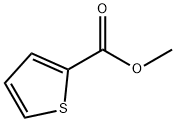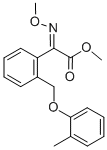Plexonal , Analysis of the control products , 51-34-3
Synonym(s):
KIAA0606;PHLPP;PHLPP1;PLEKHE1;SCOP
CAS NO.:51-34-3
Empirical Formula: C17H21NO4
Molecular Weight: 303.35
MDL number: MFCD05662373
EINECS: 200-090-3
| Pack Size | Price | Stock | Quantity |
| 5mg | RMB639.20 | In Stock |
|
| 10mg | RMB974.40 | In Stock |
|
| others | Enquire |
PRODUCT Properties
| Melting point: | 59 ºC |
| alpha | D20 -28° (c = 2.7) |
| Boiling point: | 444.28°C (rough estimate) |
| Density | 1.31 |
| refractive index | 1.5022 (estimate) |
| Flash point: | 232.2℃ |
| storage temp. | -20°C |
| solubility | Soluble in water, freely soluble in ethanol (96 per cent). |
| pka | 7.55-7.81(at 25℃) |
| form | <55°C solid,>55°C liquid |
| color | White to off-white |
| Water Solubility | 95g/L(15 ºC) |
| LogP | 0.980 |
| NIST Chemistry Reference | Scopolamine(51-34-3) |
| EPA Substance Registry System | Benzeneacetic acid, .alpha.-(hydroxymethyl)-, (1.alpha.,2.beta.,4.beta.,5.alpha.,7.beta.)-9-methyl-3-oxa-9-azatricyclo[3.3.1.02,4]non-7-yl ester, (.alpha.S)- (51-34-3) |
Description and Uses
Scopolamine is a type of alkaloid that exists in a variety of Solanaceae plants such
as Scopolia japonica, Datura metel L., and so on. It is the main active ingredient in
these plants.
Apart from scopolamine, several other chemical ingredients also exist in Scopolia
japonica, including hyoscyamine, anisodamine, anisodine, and so on. Hyoscyamine
is an inhibitor of parasympathetic nerve, with the analgesic and antispasmodic functions, especially for sciatica, sometimes for the treatment of epilepsy, seasickness,
etc., and its pharmacological effects are similar to atropine. However, its clinical
application is less because of its toxicity. The clinical applications of anisodamine
are treating infectious toxic shock, vascular disorders, various neuralgia, smooth
muscle spasms, vertigo, fundus disorders and sudden deafness, and other diseases.
It has definite curative effect and is widely used in clinical in China. Its synthetic
product is called “654-2,” which now still is an effective drug to treat infectious
shock and other vascular diseases. While anisodine is used to treat vascular headache, retinal vasospasm, ischemic optic neuritis, cerebrovascular disease, acute
paralysis, central dysfunction caused by carbon monoxide poisoning, tremor, paralysis, bronchial asthma, motion sickness, organophosphorus pesticide poisoning,
and so on .
Scopolamine is used for practically the same indications as atropine, but it should be noted that it has a sedative effect on motor activity, and it is recommended for the treatment of Parkinsonian symptoms.
Safety
| Symbol(GHS) |   GHS05,GHS06 |
| Signal word | Danger |
| Hazard statements | H300+H310+H330-H317-H318 |
| Precautionary statements | P260-P262-P280-P302+P352+P310-P304+P340+P310-P305+P351+P338 |
| Hazard Codes | T+ |
| Risk Statements | 26/27/28 |
| Safety Statements | 25-45 |
| RIDADR | UN 1544PSN2 6.1 / PGII |
| HS Code | 29399990 |
| Hazardous Substances Data | 51-34-3(Hazardous Substances Data) |
| Toxicity | A belladonna plant alkaloid that exerts its pharmacodynamic effects by blocking muscarinic acetylcholine receptor sites. The s.c. LD50 of scopolamine hydrobromide in mice is 3.8 g/kg. Scopolamine crosses the blood brain barrier, and its antimuscarinic effects include, in therapeutic doses, drowsiness, euphoria, amnesia, fatigue, loss of REM sleep and, at higher doses, restlessness or even delirium. Scopolamine can be used to treat motion sickness and parkinsonian tremor. The effects of scopolamine may be greater in the CNS than atropine, and it may be a better antidote for organophosphate intoxication. |




